A Quick Approach to Screen Oligomers from Extractables Studies Using Liquid Chromatography–Quadrupole Time-of-Flight Mass Spectrometry (LC–QTOF-MS)
Examination of extractables and leachables (E&L) is of great importance to patient protection and regulatory requirements. Accurate and rapid identification of unknown compounds in E&L is often difficult due to the wide range of additives, oligomers, and degradation products from the plastic material. Oligomers often exist at high percentages in extracted samples, making them a critical aspect of data analysis. Furthermore, oligomers can exhibit either linear or cyclic forms with a variable ratio of composing monomers, making it difficult to identify oligomers with a general formula. Toward this end, we propose a screening method for categorizing polymeric oligomers, utilizing their common fragment structure ions. First, a total ion chromatogram (TIC) of samples in both MS and elevated energy MS (MSE) mode are acquired. Next, oligomers’ characteristic fragment ions with known mass ion values, are extracted to give extracted ion chromatograms (EICs). These oligomer peaks are quickly categorized and identified without library matching. Known polyethylene terephthalate (PET) fragments including [OCC6H4CO2]+ and [OCC6H4CO2C2H4OH]+ were utilized. Out of a total of nineteen extractable peaks, thirteen PET oligomers were identified with this oligomer screening approach. This new approach greatly optimizes the accurate identification of categorized oligomers and enables a more precise E&L safety assessment.
The implementation of single-use technology (SUT) has been a growing trend across the field of pharmaceutical production, due to cost effectiveness and operating efficiency advantages over traditional stainless-steel systems. At the same time, extractables and leachables (E&L) from plastic single-use components pose risks of leaching into solutions, potentially compromising process conditions and safety for the patient. Bis(2,4-di-tert-butylphenyl) phosphate (bDtBPP), a common antioxidant additive in plastic bioreactors, showed toxicity to cell culture growth. Levels as low as 1 mg/L of bDtBPP in solution led to over 90% cell growth reduction (1). E&L are getting more attention in the biopharmaceutical industry, to the point where general requirements for E&L safety assessments have been mandated by regulatory agencies. USP (2) and BioPhorum Operations Group (BPOG) (3) have published standardized extractables protocols and industry guidelines on E&L testing and safety assessments. With increased concern and regulation, E&L testing systems and safety assessments are being developed by pharmaceutical industry members and CRO companies (4,5). As raw materials and manufacturing processes of single-use components and systems change, it is critical to evaluate the safety profile and potential impacts of new E&L compounds.
As a supplier and integrator of SUT, Pall Corporation takes on increased responsibilities to ensure delivery of both high quality and safe materials to end-users and patients. We established a standardized E&L testing protocol and risk assessment strategy (6–8) based on USP and BPOG guidelines. This protocol covers the extract sample preparation, extraction condition, data recording, and results reporting. A full analytical chemistry testing procedure has been created to analyze organic volatiles and non-volatiles, as well as trace elements. This procedure includes ultraviolet-visible spectrophotometry (UV-vis), Fourier transform infrared spectroscopy (FT- IR), gas chromatography‒mass spectrometry (GC–MS), liquid chromatography‒mass spectrometry (LC–MS), and inductively coupled plasma‒mass spectrometry (ICP-MS).
An array of polymer resins is used for SUT including polyethylene (PE), polypropylene (PP), polycarbonate (PC), polyethersulfone (PES), silicones, and fluoropolymers. Typical E&L are from plastic additives, rinsing solvents, colorants, lubricants, and other compounds related to the materials of construction in single-use components. With such a large pool of E&L compounds, an extensive internal library is needed for analytical screening. As single-use components and systems contain plastics, sterilization procedures, such as heat and gamma irradiation, can cause degradation to these materials. These processes produce oligomers, such as nylon 6,6 oligomers and polyethylene terephthalate oligomers (Figure 1). The degraded compounds may end up in the process solution and pose risks to drug potency and safety.
Figure 1: Examples of oligomers/degradants from plastic resins: (a) polyethylene terephthalate oligomers; (b) nylon 6,6 oligomers.
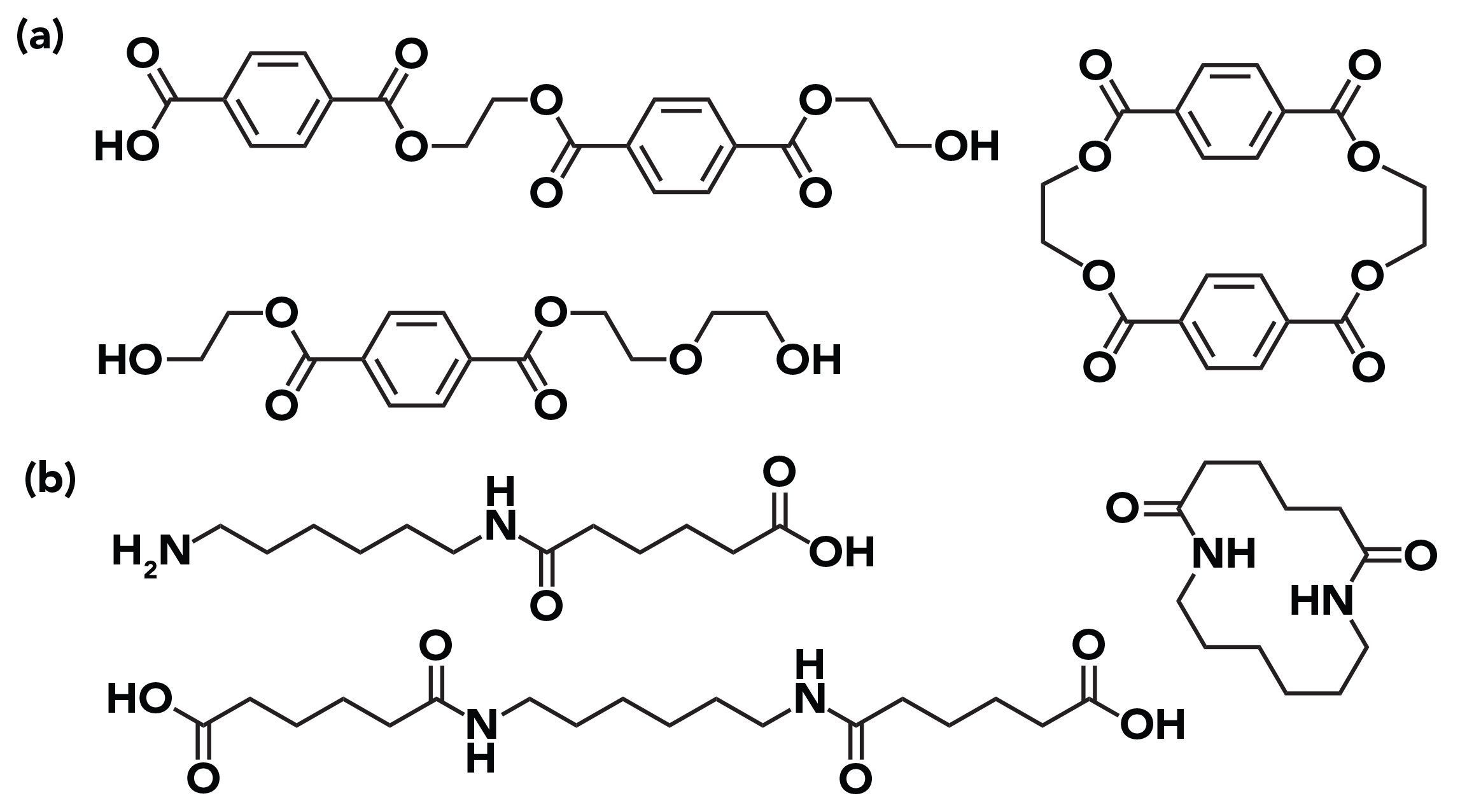
After gamma irradiation or heat sterilization of the single-use components, these degraded oligomers bear a variety of functional groups. In some cases, there are no comprehensive E&L libraries nor literature resources for these oligomeric structures. Additionally, an interference is seen between the oligomers and other plastic additives in chromatography. All these factors make compound identification and structure elucidation of the oligomers challenging. With the structures of certain E&L compounds remaining uncertain, suppliers and drug manufacturers expend more resources on advanced analytical data, E&L safety assessments, and toxicological studies with patient safety and process efficacy at the forefront. Here, we propose an oligomer screening approach to group and identify these oligomeric compounds based on type of polymer and fragment ions. Unequivocal identification of specific oligomers against the library or by structure elucidation is conducted in the subsequent step. This new approach greatly optimized the accurate identification of categorized oligomers. It increases confident in identification to facilitate toxicological and safety risk assessment of oligomeric extractables. A screening of PET oligomers in a filter extracted sample is used as a case study to demonstrate this approach.
Materials and Methods
A 50% ethanol solution was selected as extraction solvent for a nylon filter with polyester drainage and support layer. It is an aggressive extraction solvent, where high level of oligomeric species has been found in the extracted samples. The majority of these oligomers come from the filter membranes or the support and drainage layer materials, as they constitute the largest surface area in contact with the extraction solvent. The extraction system is set up with temperature control and proper thermal isolation (Figure 2). Both the pump and tubing are made from inert materials to avoid introducing contamination. The extraction solvent was recirculated through the filter and the system. A separate extraction was concurrently performed without filters to generate a negative control. The extract samples are then injected to Waters Xevo G2S QTOF MS (UHPLC) for further analysis. Chromatograms with MS and MSE information under low and high collision energy (CE) are acquired. The high CE chromatogram with MSE provides us fragmentation details of the analytes.
Figure 2: Pall extraction set-up (PFA= perfluoro-alkoxy alkane); figure from reference (6).
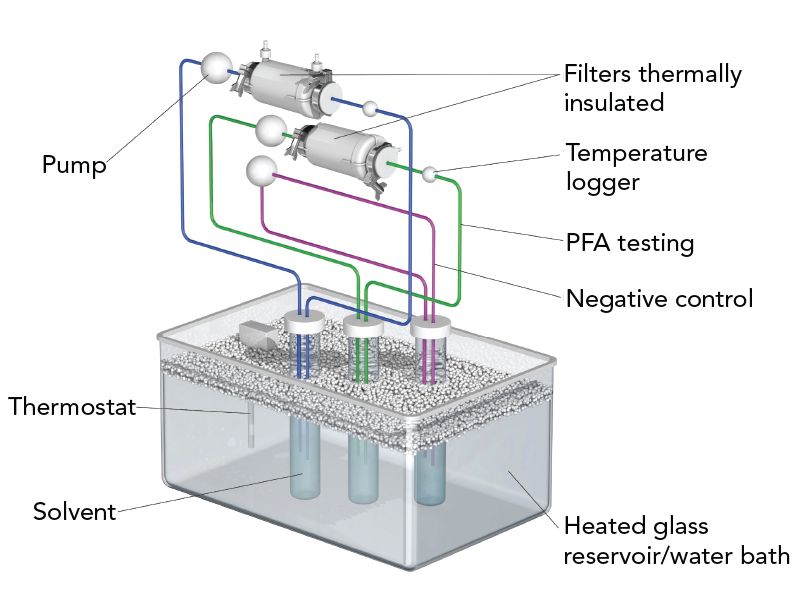
Results and Discussion
Polyethylene terephthalate (PET) is one of the most common thermoplastic polymer resins of the polyester (PE) family (9), composed of repeating unit C10H8O4 (192.0423 Da). As we investigated the mass spectrometry profile of the 50% ethanol extract sample, thirteen structures in a series of PET oligomers have been proposed based on accurate mass of parent ions and fragment ions summarized in Table I with literature backup (10). The mass error between the measured value and calculated value was within 2 mDa. PET cyclic trimer [TG]3 was found at 6.80 min with parent ions of [M+H]+ and [M+Na]+ under low CE mode. Fragment ions of [TG]3, 149.0231 m/z C8H5O3+, 193.0495 m/z C10H9O4+, and 385.0914 m/z C20H17O8+ were found with high intensity in the high CE mode (Figure 3). PET cyclic dimer with one ethylene glycol unit inserted into the PET cyclic dimer ([TG]2-G) was also observed in the form of H+ and Na+ adducts under low CE mode, with identical C8H5O3+, C10H9O4+, and C20H17O8+ fragments in high CE mode. These three fragments were also seen in several other peaks under high CE mode. A 2 μg/mL PET cyclic trimer [TG]3 authentic standard was spiked and injected. The presence of C8H5O3+, C10H9O4+, and C20H17O8+ fragments have further confirmed them as characteristic fragments of PET oligomers.
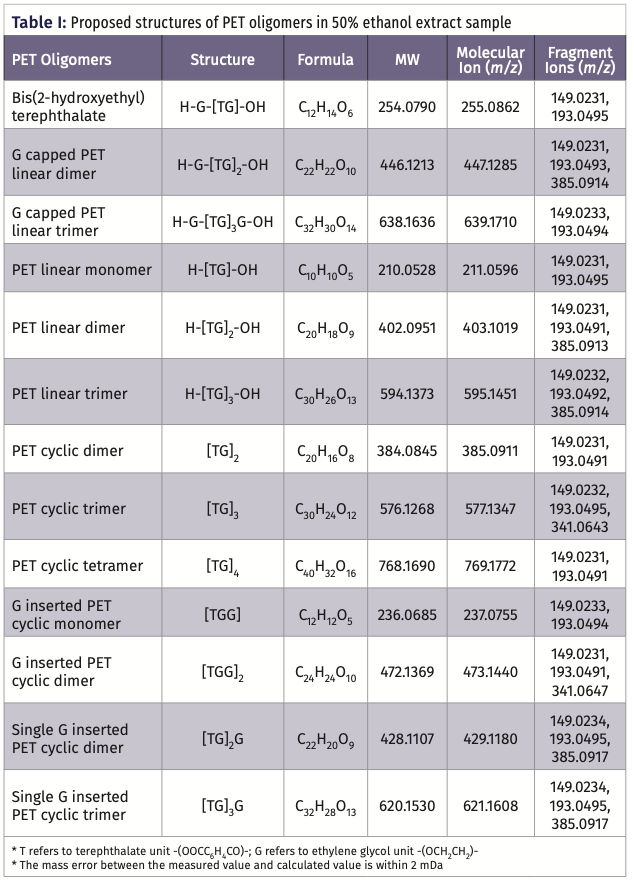
Figure 3: The mass spectra of (a) [TG]3 and (b) [TG]2-G in 50% ethanol extract sample under high collision energy (CE) mode. The x-axis label is observed mass (m/z) and Y-axis is intensity (counts).
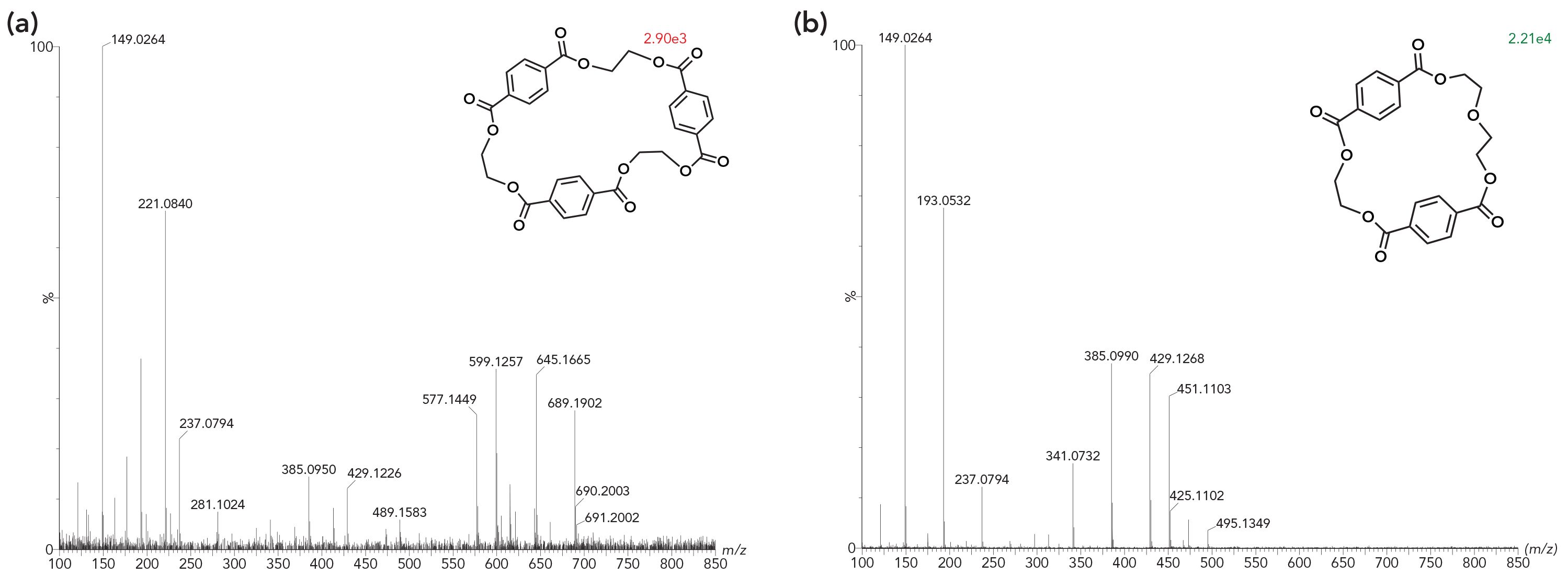
Knowing these characteristic fragments, we can rapidly screen out PET oligomers in extract samples of filters comprising its polymer resin. An example is shown in Figure 4. Extracted ion chromatograms (EICs) were obtained by extracting C8H5O3+, C10H9O4+, and C20H17O8+ characteristic fragment ions (±0.5 Da range) in the chromatogram, respectively. Comparing the TIC with the EICs, these peaks between 4.8 and 6.6 min in TIC (in green) were shown to have intensive C8H5O3+, C10H9O4+, and C20H17O8+ fragment ion peaks in EIC under high CE mode. This comparison demonstrates that they produce characteristic fragments of PET oligomers and bear the oligomeric functional groups in structure. These compounds were then identified to be PET-related oligomer. Further library matching of parent ions and structure elucidation was conducted in a subsequent step to unequivocally identify each PET-related oligomer. Additionally, this oligomer screening approach is not limited to PET oligomers; it also applies to siloxane and nylon oligomers (11).
Figure 4: Chromatograms of an extract sample of filter comprising PET resin: (a) total ion chromatogram under low collision energy (CE); (b) extracted ion chromatogram (EIC) of 149.0231 m/z C8H5O3+ under high CE; (c) EIC of 193.0495 m/z C10H9O4+ under high CE; (d) EIC of 385.0914 m/z C20H17O8+ under high CE.
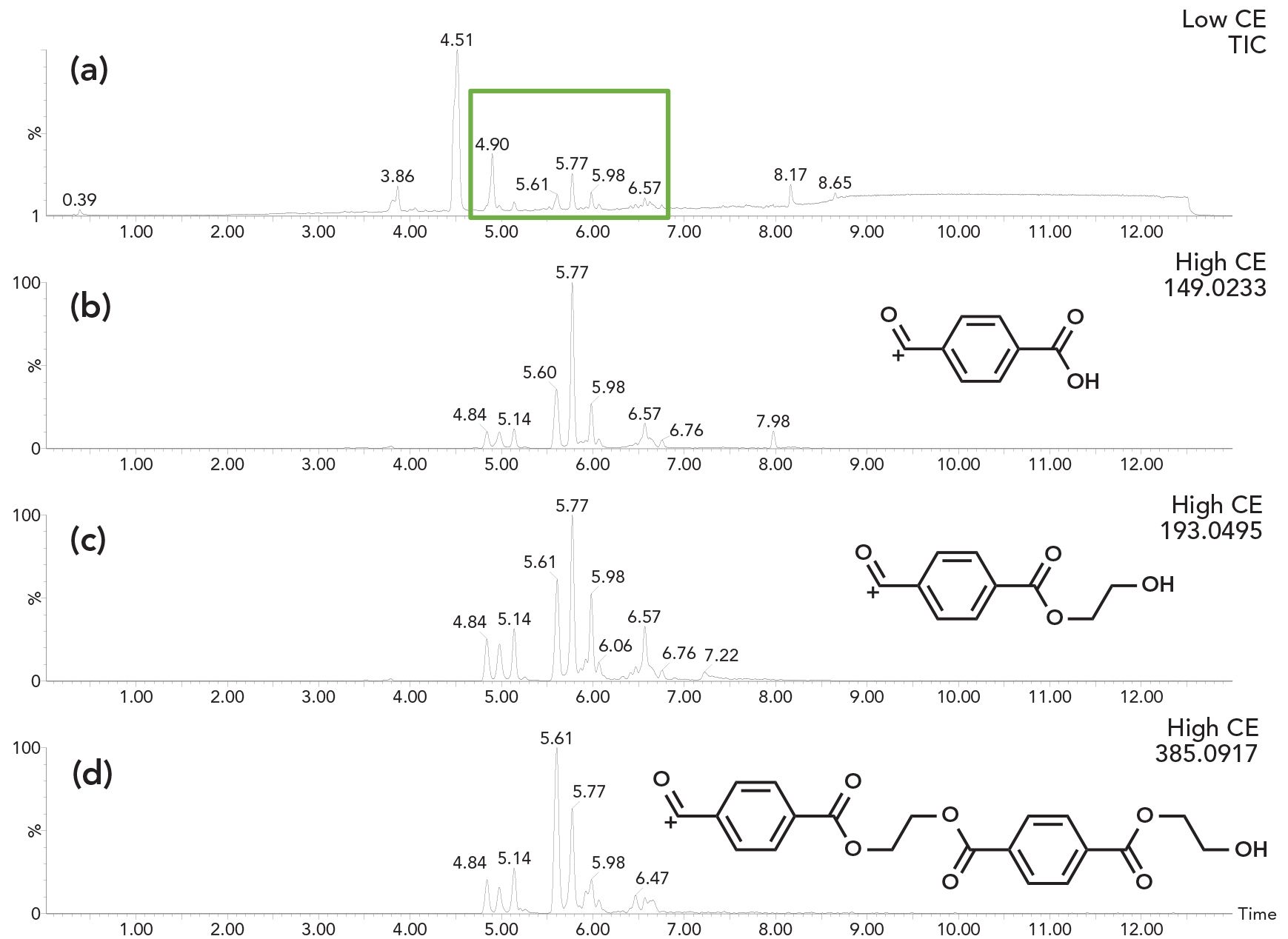
A stream map of this oligomer screening approach has been proposed in Figure 5. First, a TIC of samples in both MS and MSE mode are acquired. Second, oligomers’ characteristic fragment ions are proposed from polymer structure or looked up in literature. With known mass ion values of the characteristic fragment ions, EICs can be obtained. The peaks in EIC may suggest the presence of oligomeric functional groups in structure. Further identification of the compounds can be conducted with the help of library search and structure elucidation. If proposed library matches yield incomplete or inconsistent results in the subsequent step, these oligomer peaks can be quickly categorized and identified based on family of polymers, even though it is not an unequivocally ID of each PET oligomer. This new approach significantly decreases processing time on oligomer screening, and optimizes the accurate identification of categorized oligomers. It yields thorough screening and accurate identification of E&L compounds, and then provides meaningful E&L risk assessments. Furthermore, a good E&L risk assessment gives SUS suppliers and their customers confidence in their product portfolio.
Figure 5: A stream map of oligomer screening approach.


Chemical safety risk assessment is the process by which the potential adverse patient safety impact of E&L is determined and quantified. A patient’s total daily intake (TDI) level is determined by considering E&L exposure from the clinical use of the drug product. Based on the leachable’s toxicity, a permitted daily exposure (PDE) is established. If the TDI is less than the PDE, the leachable is deemed to be safe. Equations 1 and 2 above show examples of a safety assessment on PET related oligomer with a total of 4 μg/ mL in the extract sample from an extractables study. The sample was extracted from one filter at 30 °C for 24 h, which brackets end-users process conditions for manufacturing of a drug product intended for 10 mL/day administration. TDI was calculated considering the design of the extraction study, dilution volume in the manufacturing process, and daily dosage (2). Toxicologists determine the PDE for human exposure based on available toxicological information, body weight, and applicable modifying factors (12). In this example, the PDE of a PET oligomer is 2000 μg/day, which is significantly higher than the estimated TDI 16 μg/day. The margin of safety (PDE/TDI) is greater than 1 for a PET-related oligomer identification, yielding a negligible adverse impact. If this compound were an unknown, it would have to be identified as higher than acceptable safety concern thresholds (for example, 1.5 μg/day).
Conclusion
With this oligomer screening approach, 13 PET oligomers and 3 nylon oligomers were identified successfully by extracting common fragments. These oligomer peaks are quickly screened and categorized before library matching. This new approach greatly optimized the accurate identification of categorized oligomers. It enables a more precise and meaningful E&L safety assessment. Our future work is to expand this oligomer screening approach to a wider range of polymeric materials and build a comprehensive E&L library of oligomers from SUT.
Acknowledgments
The authors would like to thank Gilbert Tumambac for helpful technical reviews of the manuscript. The authors are also grateful to Wenan Lu, Emily Volk, Kuang-Wei Yang and Jin Ren for their contributions in the early stages of this project. The authors would like to give a final thanks to Rebecca Kale for facilitating the revision process.
References
(1) K. Fujimori, M. Hammond, J. Liu, H. Lee, M. Ronk, H, Nunn, and Y. Samuel, Am. Pharm. Rev. 20(1), 48‒54 (2017).
(2) United States Pharmacopeia General Chapter <USP 665> Plastic Components and Systems Used to Manufacture Pharmaceutical Drug Products and Biopharmaceutical Drug Substances and Products (2020).
(3) BioPhorum Best Practices Guide for Extractables Testing of Polymeric Single-use Components Used in Biopharmaceutical Manufacturing (April 2020).
(4) D. Jenke, Anal. Chem. 101, 56‒65 (2018).
(5) I. Paul; S. Dorey, M. Barbaroux, B. Lagrange et al., PDA J. Pharm. Sci. and Tech. 68, 456‒471 (2014).
(6) G. Tumambac, B. Song, C. Xing, G. Li, W. Lu, L. Liu, C. Shih, and J. Hathcock, BioProcess Int. 15(11), 18‒25 (2017).
(7) G, Tumambac, B. Song, X. Li, G. Li, C. Shih, and J. Hathcock, BioProcess Int. 16(1‒2) 14‒20 (2018).
(8) W. Ding, G. Madsen, E. Mahajan, S. O’Connor, and K. Wong, Pharm. Eng. 34(6), 1‒11 (2014).
(9) S.R. Turner and Y. Liu, in Polymer Science: A Comprehensive Reference (Else- vier, Waltham, Massachusetts, 2012), pp. 311‒328.
(10) D. Kim and K. Lee, Polym. Test 31(3), 490–499 (2012).
(11) T. Abe, L. Ackerman, M. Mutsuga, K. Sato, and T. Begley, Rapid Comm. Mass Spectrom. 34, 1‒10 (2020).
(12) D. Jenke and T. Carlson, PDA J. Pharm. Sci. and Tech. 68, 407‒455 (2014).
Bin Sun, Owen Perlowski, and Benben Song are with Pall Corporation in Westborough, Massachusetts. Direct correspondence to owen_perlowski@pall.com
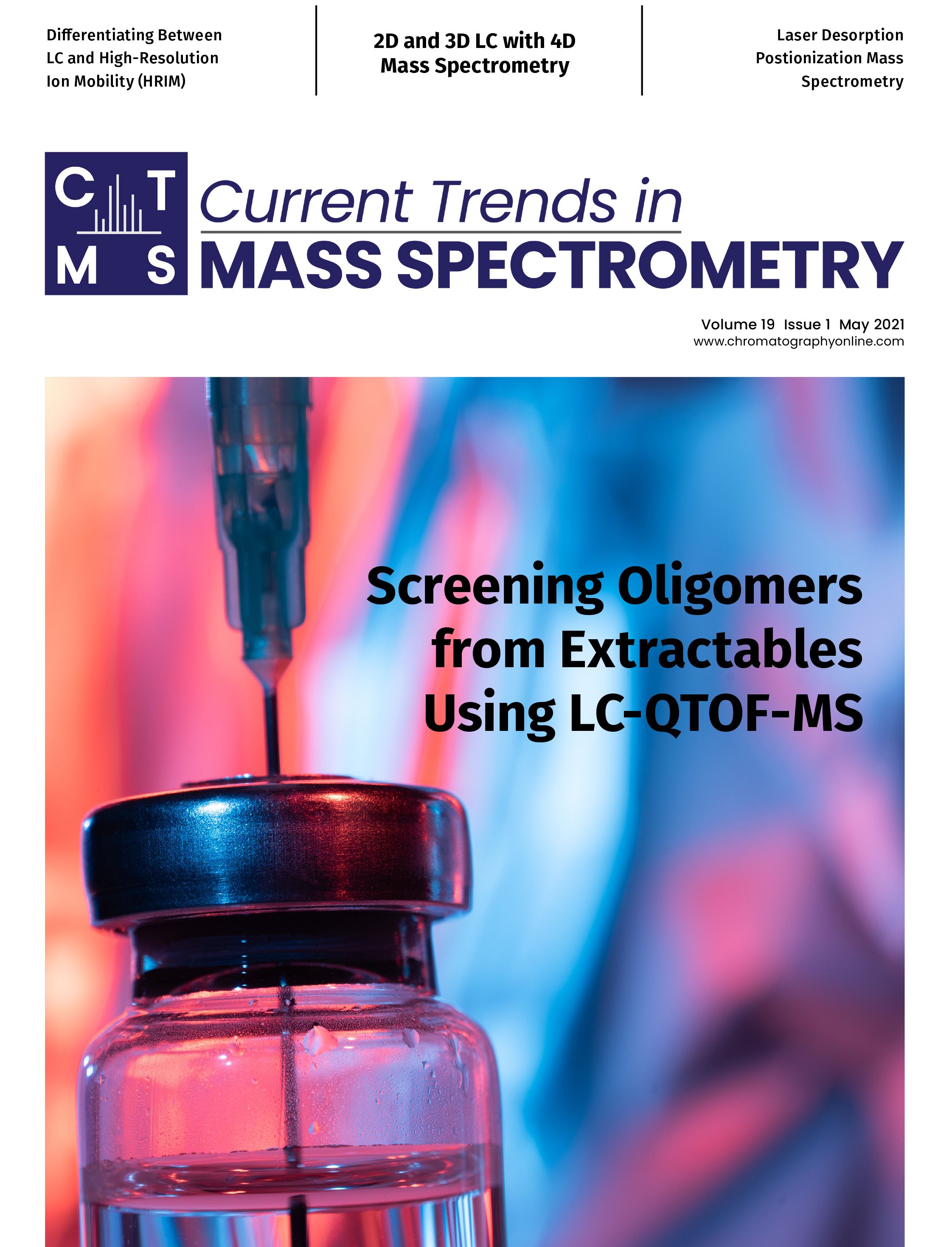
Study Explores Thin-Film Extraction of Biogenic Amines via HPLC-MS/MS
March 27th 2025Scientists from Tabriz University and the University of Tabriz explored cellulose acetate-UiO-66-COOH as an affordable coating sorbent for thin film extraction of biogenic amines from cheese and alcohol-free beverages using HPLC-MS/MS.
Quantifying Microplastics in Meconium Samples Using Pyrolysis–GC-MS
March 26th 2025Using pyrolysis-gas chromatography and mass spectrometry, scientists from Fudan University and the Putuo District Center for Disease Control and Prevention detected and quantified microplastics in newborn stool samples.










